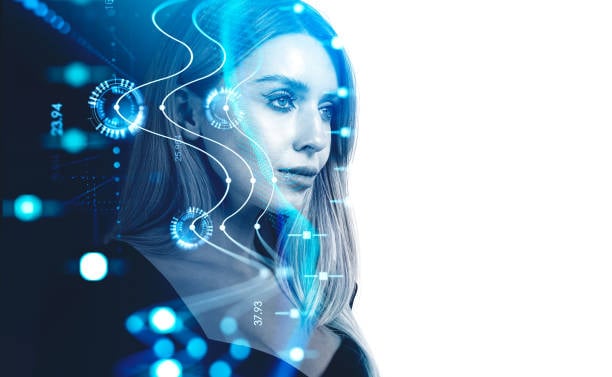Digital marketing has been turned into a lot more than just memorable campaigns and smart targeting. Trust is now the core of all the Internet. Face liveness detection is appearing as a game-changer as businesses continue to dive into personalization and user verification. It is not only a buzzword, but it is influencing the way brands are creating safer and more genuine digital environments.
What is Liveness Detection and Why It Matters.
It is time to explain what is liveness detection before delving into trends. Put simply, it is a technology that authenticates the presence of an individual at the other side of the camera, a person and not a photo, video recording, or a mask. This is more than you may imagine.
Suppose you sign up to a service and find out that somebody has made a fake account and used your social media photo on it. Creepy, right? Liveness checks avert that. Systems can instantly identify fraudulent activities by tracking tiny movements, depth information or even reflections of light. This translates to actual users in marketing, a reduced number of bots and less manipulation.
Face Liveness Detection: It is not only about security.
Face liveness detection is not just a way of securing logins. To digital marketers, it is unleashing smarter user engagement tactics. Consider individualized video campaigns, e.g. Brands can now validate the real-time presence of a viewer and then serve them customized content, so that advertisements land on authentic people, not bots and nonsensical accounts.
There are also some companies that are employing liveness detection self-technology when signing up with loyalty program. Users do not undergo lengthy verification processes but take a fast selfie. Onboarding is an easy and surprisingly quick procedure as the system verifies whether it is live or not a printed picture. Such a frictionless experience can be converted into increased rates of conversion.
Active Liveness Detection: combating Deepfakes.
The emergence of deepfakes is one of the biggest threats that marketers have to contend with nowadays. Fake influencers. Artificial video testimonials. Even AI generated faces posing as customers. Active liveness detection comes in there.
With the active methods, in contrast to a passive checks, where images are quietly analyzed, active methods request the user to perform little actions, such as blinking, smiling, or turning his head. Such micro-movements can hardly be accurately reproduced in a fixed picture or a deepfake video. To marketers, it implies more assurance of identity and the increased security against impersonation scams.
Real-Time Campaigns Video Liveness Detection.
And now, visualize this scenario: a brand creates an interactive event on social media that can be available only during a specific time, although only real people are allowed to take part. How? By video liveness detection. Brands can make their experiences authentic and spam-free by ensuring that all participants are real humans on camera.
This type of detection is already occurring in the influencer giveaways and livestream shopping campaigns. Robots immediately filter the spam of entries and comments. The result? Less spammy engagement, natural engagement with customers, and fewer headaches in the marketing departments.
Livelihood Detection Technology Meets personalization.
Personalization is the key to modern marketing. Personalization is, however, of no use when the data is about fake users. This is where liveness detection technology comes in quietly and assists the marketers.
Through making every digital engagement a result of a real, verified user, marketers will be able to re-trust their analytics. They are able to segment audiences with greater precision, offer They can create personalized offers with greater certainty and gauge the impact of their campaigns without interference from artificial bot traffic.
Marketers are applying document liveness detection in even highly regulated industries, such as the banking and insurance sectors, where customer acquisition is among the key factors. The system does not use scanned ID only, but authenticates the document and the individual who possesses it. The latter dual check mitigates fraud and makes digital onboarding easier.
Liveness Detection Software: The Engine of digital trust.
None of this magic would be possible without state of the art liveness detection software. The current technologies are a combination of computer vision and AI with biometric analysis that identify spoofs with unbelievable accuracy. Others are even trained on how to detect hyper-realistic deepfakes created using advanced tools.
This is the thing though–good software makes all this happen in milliseconds. That speed matters. Nobody desires having a cumbersome verification procedure between an advertisement campaign or a registration form. This technology is useful to marketers because of its seamless integration.
Possible Future Digital Marketing.
In the future, liveness detection is probably going to be an automatic aspect of digital marketing tactics—similar to cookies in the past. However, unlike cookies, this technology prioritizes authenticity over surveillance.
- Better community building: Brands will develop spaces that have validated users, spam and abuse will reduce.
- Better credible analytics: Campaign data will be based on actual human behavior, but not bot behavior.
- New types of interaction: Liveness checks in real-time might make possible new types of campaigns, such as live polls, AR try-ons, and verified testimonials.
As digital ecosystems transform, the ability to distinguish between real and fake users will determine which brands can succeed. Early adopters of liveness detection will not only receive security benefits but also strategic marketing benefits.
Final Thoughts
Being creative is not the only future of digital marketing. It’s about being credible. The technology of face liveness detection, video liveness detection and other types of liveness detection is assisting brands to establish such credibility in less dramatic yet highly effective ways.
The next time that you encounter a fast liveness check selfie step during the registration of a service, do not roll your eyes. It is that small moment of time that may be the difference between digital spaces remaining safe, clean, and human.


